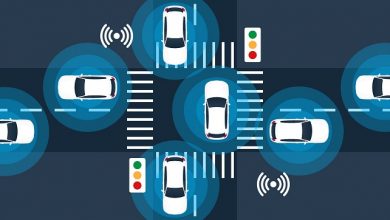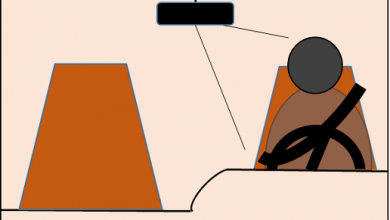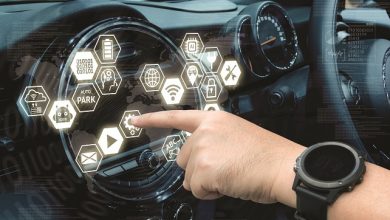Navigating through the Telematics Ecosystem Quagmire
Author: Sirish Batchu, Mahindra & Mahindra Ltd.
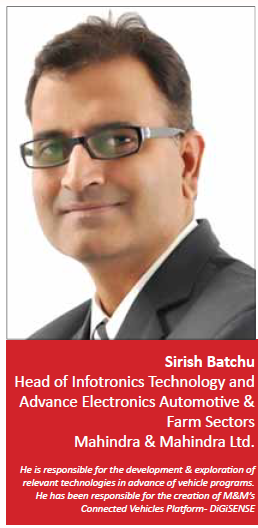
It has been exactly a year since my last interview on the Connected Vehicles in “Smart Automotive” in Sept’2015 where I had spoken about the challenges towards the mass adoption of the connected vehicles solutions and also my personal view on the subject that it is just a matter of time that the connected vehicles will become a mainstream in India. I had mentioned that though there are many aftermarket solution providers, it will take strategic call from the OEMs to make telematics an integral offering in the vehicles (especially commercial vehicles) where it would not only benefit the customer for bringing in more efficiency but will also help the OEMs in a big way through the insights (Data Analytics) that can be available to better the service offerings & product designs and also that we (Mahindra) are shortly going to introduce our own Connected Vehicles solution in the market.
I would restrict my views in this article mainly from the lens of an OEM/consolidated player.In the last one year we have seen a couple of market launches from the OEMsin India (Honda & Mahindra) and some works are in pipeline from other OEMs.
Honda introduced their Connected Vehicles solution for their passenger cars in Dec-2015 and created a lot of initial buzz by pitting it as an exclusive offering. Honda offered an OBD based dongle and a mobile-app based solution at a discounted price for the initial few customers with a trial for one-month post which the customer was expected to pay one-year subscription charges. It offered introductory features with location tracking and to some level integration with service related features, more in the realm of convenience based features.
On Aug 26th2016, Mahindra & Mahindra launched its homegrown Connected Vehicles Platform “DiGiSENSE” becoming the first OEM to leverage one integrated technology platform for connected vehicles across a wide range of mobility products, tractors and businesseswhich is multi-application and multi-product enabled. DiGiSENSE will initially be available in the Jeeto and Imperio in the small commercial vehicles space; the Arjun Novo in the tractor space; the Mahindra Blazo in the heavy commercial vehicles space; and the Earthmaster in the construction equipment space and will eventually be available across the entire line-up of Mahindra’s vehicles.
Exclusive v/s Inclusive
Unlike manyconnected vehicles solutions in the industry that are positioned as an exclusive offering in the passenger cars space or closed telematics systems, Mahindra has taken the strategy to make it a more inclusivesolution. By inclusive I mean keeping in view the bottom of the pyramid where such a solution will make the maximum impact and including it in the breadth of its mobility portfolio (CVs, Off-road vehicles & Tractors), M&M has chosen to provide value to businesses first by addressing the direct customer needs impacting their businesses and bringing in the relevant features to address the need gap. The inclusivity also stems from the fact that M&M is holding the entire responsibility of the solution through a factory fitted telematics hardware (instead of a dongle or aftermarket hardware) and orchestrating the entire ecosystem by including various partners (Bosch, TechMahindra, Vodafone, etc.to name a few) and providing tailor made solutions to suit the various customer segments/needs (Fleet Owner, Driver, Dealer, Service Technician, etc.).
This brings to the fore an important point – as to what to consider as the ecosystem in this domain. In my view, a comprehensive telematics solutionis impacted by the following keyconsiderations which I term as the ABCs of the connected vehicles ecosystem:
- Affiliate Ecosystem
- Business Ecosystem
- Customer Ecosystem
1. Affiliate Ecosystem
The telematics solutionshave moved away from just being a black and white transactional offering to a more colorful interplay of the entire spectrum of technology affiliates/stakeholders. It is no more in the capability of a single solution provider to be able to build it in entirety. It has become imperative that it needs an orchestration of the complete ecosystem for a successful solution.
One of the most critical player in the affiliate ecosystem is the Telecom service provider, who not has the responsibility to provide highly reliable connectivity under all conditions & geographies, but also provide a comprehensive M2M platform (to monitor the SIM and data usage & other functions) that empowers the solution provider to offer most optimal solution to the end customer. Compared to earlier days, this is now fast changing in India with Vodafone leading the pack with a home grown M2M platform and others catching up through partnerships with established global players.

The other key players in the ecosystem are the Technology enablers who have a variety of choices available on hand to provide the end-user applications (web/mobile, etc.). There are umpteen choices available today in terms of the application technologies and at times it is difficult to make a decision as to which one to pick. The rate of obsolescence is so high that by the time a solution is stabilized, the technology/version would have got upgraded and the applications break down in backward compatibility. To add to the complexity, this is also marred with the challenges of compatibility issues between various technologies (Java, .NET, ASP, etc.) at different interfaces. The need of the hour is to choose an approach where the feature functions implementation and technologies are loosely coupled so that they are not only able to withstand the changes but also be able to provide seamless upgrades to the customers without major impact on the existing applications/business logic and avoid extra costs.
The Cloud forms another important piece of the puzzle and thankfully there are several cloud and IoT platforms at disposal that offer a very good performance and scalability. One just has to make sure that the data servers reside in the country of origin in order to avoid any regulatory/compliances issues.
The availability of 3rd party affiliates is growing by the day – with many more entities and startups coming up with very innovative ideas and value added services. The challenge is to provide an open platform where these services can be easily plugged-in and convert them into sustainable value propositions & business models.
The suppliers of the telematics hardware solution have now matured are able to provide very robust hardware systems that the OEMs can rely upon and in certain cases also provide grounds-up development from scratch to meet the OEM’s requirements within acceptable time-to-market.
The issues of maintaining interoperability (IOP) and compatibilities with various mobile devices is always a challenge with the growing number of mobile device manufacturers and variety of models around. However, with the usage of the standardized hardware configurations, this is slowly moving away from the limelight.
2. Business Ecosystem
When a telematics solution comes as an offering from an OEM stable, then it not enough to sit tight on the feature offerings without integrating with the business processes. For example, in case of a breakdown alert arising from the system, the customer value proposition is not fulfilled until the entire service chain is not able to respond within a few hours with the right fix for the breakdown at the location. The entire chain had to be activated to be able to provide a timely response & resolution.
The key lies in creating a compelling value proposition for the customers to use the features on a sustainable basis. The Connected Vehicle platforms can provide exponential value through integrationof the entire business ecosystem namely the Service management systems, Dealer management, Spares management and the Call centres, Customer databases, Sales databases, etc. that can pipe into one single CRM window for the OEM.
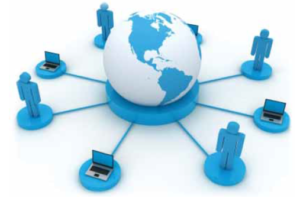
The OEMs can bring in tremendous value by seamlessly integrating all the business processes/systems, not only to the end customers but to the various entities within the organizations by being able to provide lots of insights about their vehicles and customers. Starting from Product Planning, Marketing teams to R&D teams and Service and Spares teams, everyone can benefit from the insights that the Telematics systems can provide.
Very often the OEM teams get bogged down by the costs and investments required for scaling this up and understandably so since the Indian market & customers are very cost sensitive. However, the real potential of a comprehensive telematics platform can be harnessed only through aseamless business ecosystem and this needs to be backed by a value oriented thinking rather than cost oriented thinking.
3. Customer Ecosystem
The third and most critical aspect is the Customer Ecosystem. Though the core elements of a telematics solutions remain the same across, the application and the context in which customers utilize these vastly differ. There are a variety of applications where the telematics solutions can be applied, be it fleet management of inter-city load carriers, intra-city distribution, security vans, e-commerce vendors, food-supplies, logistics, school-buses, public/private transportation, personal convenience, etc. Each context has a unique requirement in terms of business needs and performance parameters. The customers in these business look for the specific enablement of their needs and this is the reason why you see so many scattered solutions and players in the aftermarket. For a consolidated player to be able to meet this need, it is imperative that they have to provide a platform that is highly adaptable& flexible and which gives full control to the customer in terms of defining and monitoring their specific business needs.
The success of the telematics business lies in being able to positively impact the bottom-line sensitivity of the customers and their impacting touchpoints.
The customer should feel the empowered and be able to control the way their business gets enabled through a solution which can be fully configurable.
I would like to conclude saying that at M&M we have considered most of the above elements while solutioningtheDiGiSENSE platform. The initial features available are just beginning of the journey that have been carefully selected keeping the various customer needs in mind. More and more new features and upgrades will be available on this platform to our customers. We are very sure that this will revolutionize the way our customers will interact with their Mahindra vehicles and will empower them to maximize their efficiencies and effectiveness. The DiGiSENSE platform will serve as a foundation for us for the exciting possibilities that the Connected Vehicles can offer in future.
I am personally confident that DiGISENSE will change the way the digital technology enables the Automotive & Mobility industry in India by introduction of such a paradigm at a mass scale. I’m sure the industry will immensely benefit from it by the way of the momentum it will create and compel other players to come forth and it will become an integral part of the vehicles and lives in India, the way mobiles have become today.

